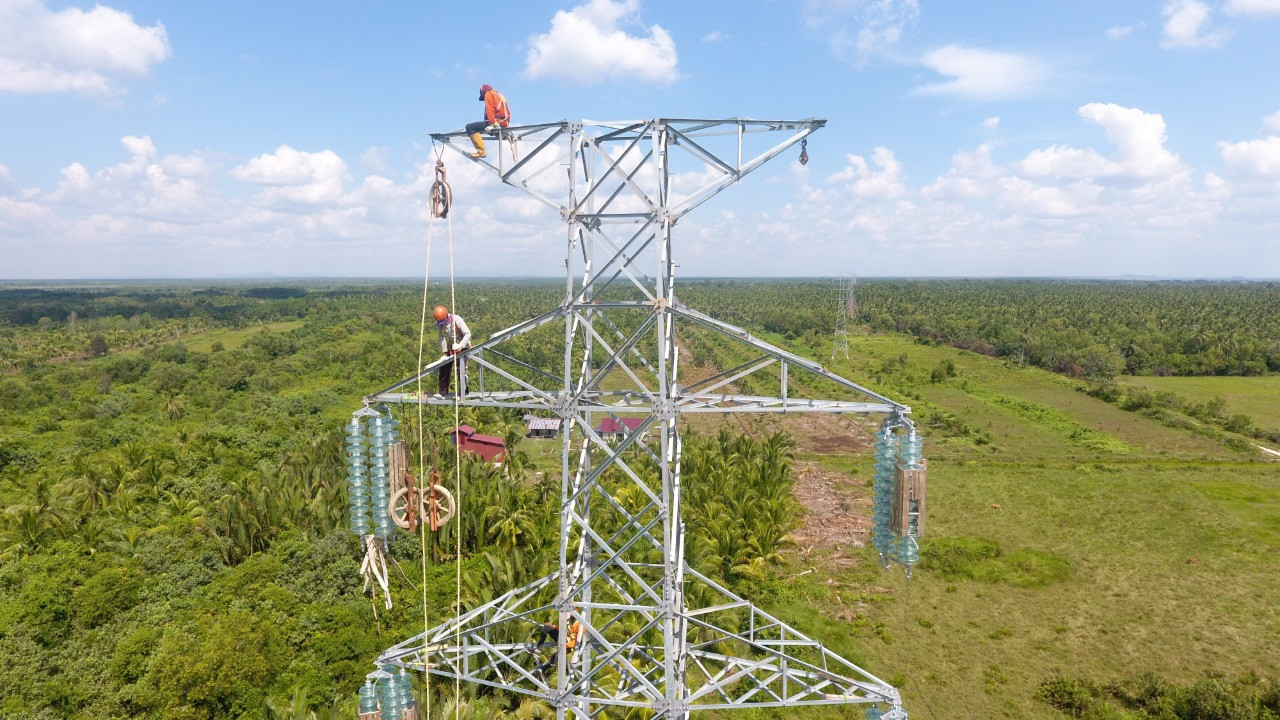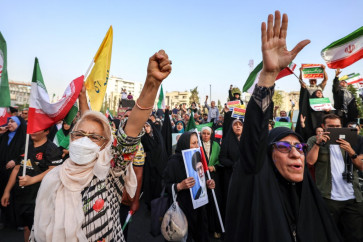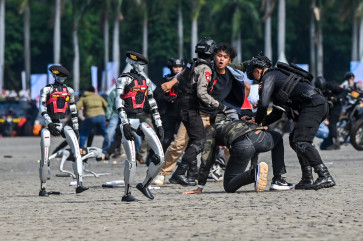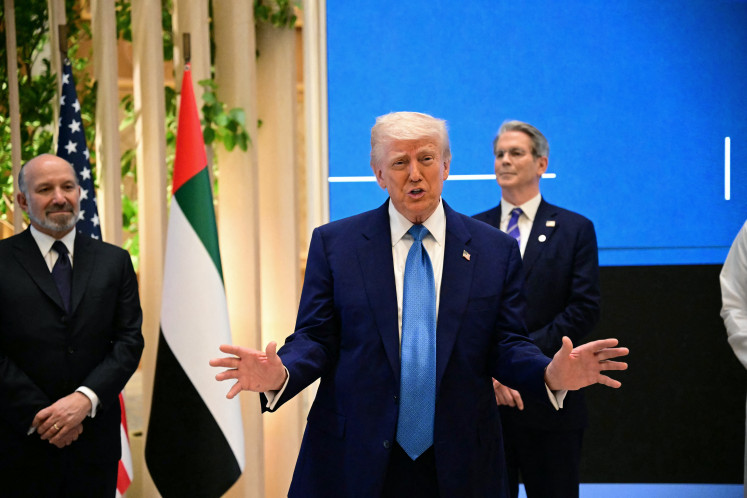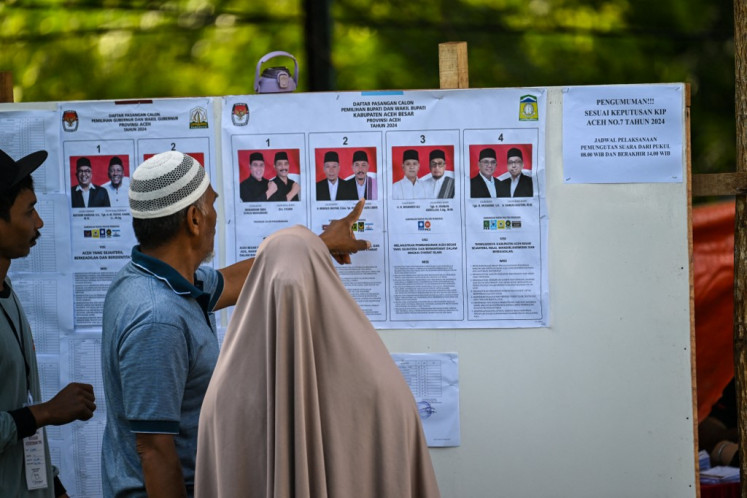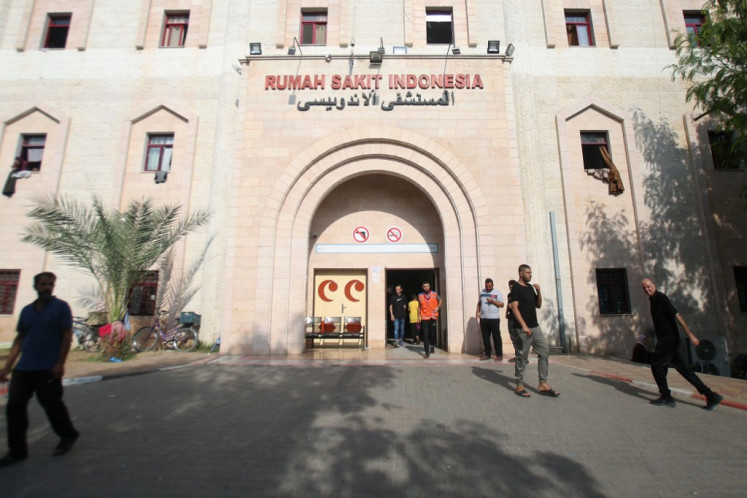Popular Reads
Top Results
Can't find what you're looking for?
View all search resultsPopular Reads
Top Results
Can't find what you're looking for?
View all search resultsPowering up Indonesia’s economy with the ASEAN grid
Change text size
Gift Premium Articles
to Anyone
A
comprehensive interconnection of ASEAN’s power grid has been a long-held dream, first emerging into serious discourse in the 1980s. Now, almost four decades later, we might finally be approaching a moment when the pressure for climate action moves this idea toward a more established reality.
The push for renewables in Southeast Asia
Electricity demand in Southeast Asia is growing at a phenomenal rate — forecast to triple in volume from 2022 to 2050 according to the ASEAN Energy Outlook. Meeting this surging demand while balancing the energy trilemma of secure, affordable and sustainable energy will not be easy.
Nations are increasingly looking to renewable energy sources to form part of the solution, with most ASEAN countries targeting around 30 percent share of renewable energy in the power mix by 2030.
ASEAN benefits from diverse and varied renewable energy capacities to achieve these ambitions — substantial geothermal capacity in Indonesia and Philippines, wind and solar in Vietnam, hydropower capacity in Laos and Malaysia and significant solar energy capacity across the region especially in Thailand and Malaysia.
However, integrating renewable technologies has its own set of challenges. It requires investment both in technologies and grid upgrades in transportation renewable electricity from the point of generation to location of demand. Intermittent generation will also require careful investment to balance peak times of generation with peak demand.
Ultimately, renewables potential will also rely on local geography and weather.
Indonesia benefits from the world’s second-largest geothermal resources, alongside significant solar, hydropower and biofuel potentials. Leveraging these resources will be vital if Indonesia is to mitigate the emissions impacts in a country where electricity consumption is projected to triple by 2030.
Combining these opportunities with an interconnected ASEAN grid could further empower Indonesia’s growing economy, creating a low-carbon opportunity that supports its commitment to achieving 2060 net-zero targets, and accelerate the net-zero pathways of neighboring countries.
Overcoming challenges with interconnections
Interconnections — high-voltage cables that connect electricity systems of different countries — can play a critical role in mitigating the challenges of renewables integration. Indonesia is already home to several such connections, creating for example, a high-voltage bridge between the Indonesian province of West Kalimantan and Malaysian state of Sarawak.
Interconnections allow the transfer of energy from areas with abundant energy generation at a time when other regions face a shortage. This would enable the region to integrate different sources of renewable energy with complementary supply profiles, facilitating the decarbonization of ASEAN power systems.
Such trade in electricity allows for better stability and improved load balancing. It can also help optimize power infrastructure investment across the region as countries can invest in assets for which they have high renewables potential, while relying on the ASEAN grid to supply other sources of renewables where needed.
This would enhance market efficiency, bring down costs and improve affordability. Alongside lower investment costs, interconnections can also reduce required reserve ratios and facilitate development in resource-rich, emerging economies.
An interconnected power system also boosts resilience in the face of significant global pressures. Having a reliable regional supply of renewables can help reduce reliance on fossil fuel and mitigate fuel volume and price uncertainties from events such as the war in Ukraine and the recent volatility of Southeast Asian coal prices triggered by fluctuating demand in China.
When combined with an interconnected grid, Indonesia’s significant renewable energy capacity can provide a potential pathway for wider economic benefits, allowing it to export excess renewable energy to regional neighbors at times of surplus.
Indonesia is already exploring the benefits of a more integrated ASEAN grid, with recent proposals to develop as US$5 billion plan to send clean renewable energy to Singapore. This proposal would see large solar and battery storage facilities developed on Indonesia’s Riau Islands, connecting to Singapore via undersea cable. Such an interconnection could offer lucrative returns to investors and stakeholders in Indonesia, while also helping neighboring Singapore address its need for renewable energy imports to meet its own low-carbon power targets.
Making the ASEAN grid a reality
Achieving an effective and interconnected ASEAN grid will require several key enablers. Regional funding mechanisms need to be established to push forward interconnection projects, and fair financial settlements will be required to create a sustainable market for imports and exports.
Technical considerations include ensuring the appropriate technical standards are met for inter-grid connections, ensuring secure and accurate data flow and information to enable operations, and maintaining the reliability of power transmission across participating countries.
Countries need to ensure fair governance and transparent regulations on interconnection projects and operations. They should also promote forward planning in line with growing demand and define a clear process for project approvals. Most critically, alignment across governments of the region will be vital to drive this transition toward success.
One example of such success is the mature energy market of the European Union, where interconnections enable the regional supply of electricity from varied low-carbon sources such as nuclear in France, hydropower in the Nordics, and solar and wind in Germany.
Key coordinating institutions such as the European Network of Transmission System Operators for Electricity and the Agency for Cooperation of Energy Regulators help to align efforts across over 30 countries. The Energy Infrastructure Forum provides a platform for technical cooperation, while investment needs are addressed by EU funding instruments such as the Connecting Europe Facility.
Power trading is enabled by the set-up of several power exchanges and a common regulatory framework helps harmonize the regulatory landscape. Delivering on this interconnected future will take time. Europe took decades to develop the infrastructure we see today.
Yet ASEAN is a region on the rise, and as economies continue to mature, interconnected power infrastructure offers a chance to support that growth.
Why now is the time to drive to action
There are signs of growing momentum for the ASEAN Grid. After decades of limited bilateral power deals, the first tri-partisan power-sharing agreement in the region was established in in 2017.
This agreement saw Malaysia purchasing over 100 megawatts of hydroelectric power from ASEAN partner Laos, transmitted through Thailand’s grid in a power wheeling agreement. The agreement was extended in 2019, with capacity expanding to 300 MW.
Singapore, which is renewables-constrained due to its limited land area, is completing the chain by participating in the Laos-Thailand-Malaysia-Singapore (LTMS) Power Integration Project to trial the import of hydropower from Laos.
The proposed solar energy agreements between Indonesia and Singapore represent another encouraging step, with efforts to develop an effective regulatory framework demonstrating a serious commitment to the enabling mechanisms, which will be critical in the search for a functional, interconnected future.
These initiatives are promising and should encourage further regional cooperation on the development of the wider ASEAN grid. Given the time horizon required to plan and build the necessary regulatory, financial and physical infrastructure, the region must act swiftly to accelerate interconnection efforts and enable a green, secure and affordable energy future for all.
*****
Kar Min Lim is principal and Marko Lackovic is managing director and partner at Boston Consulting Group

